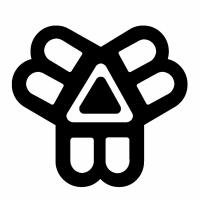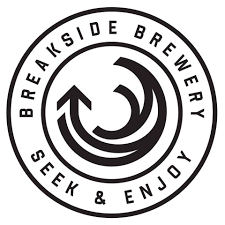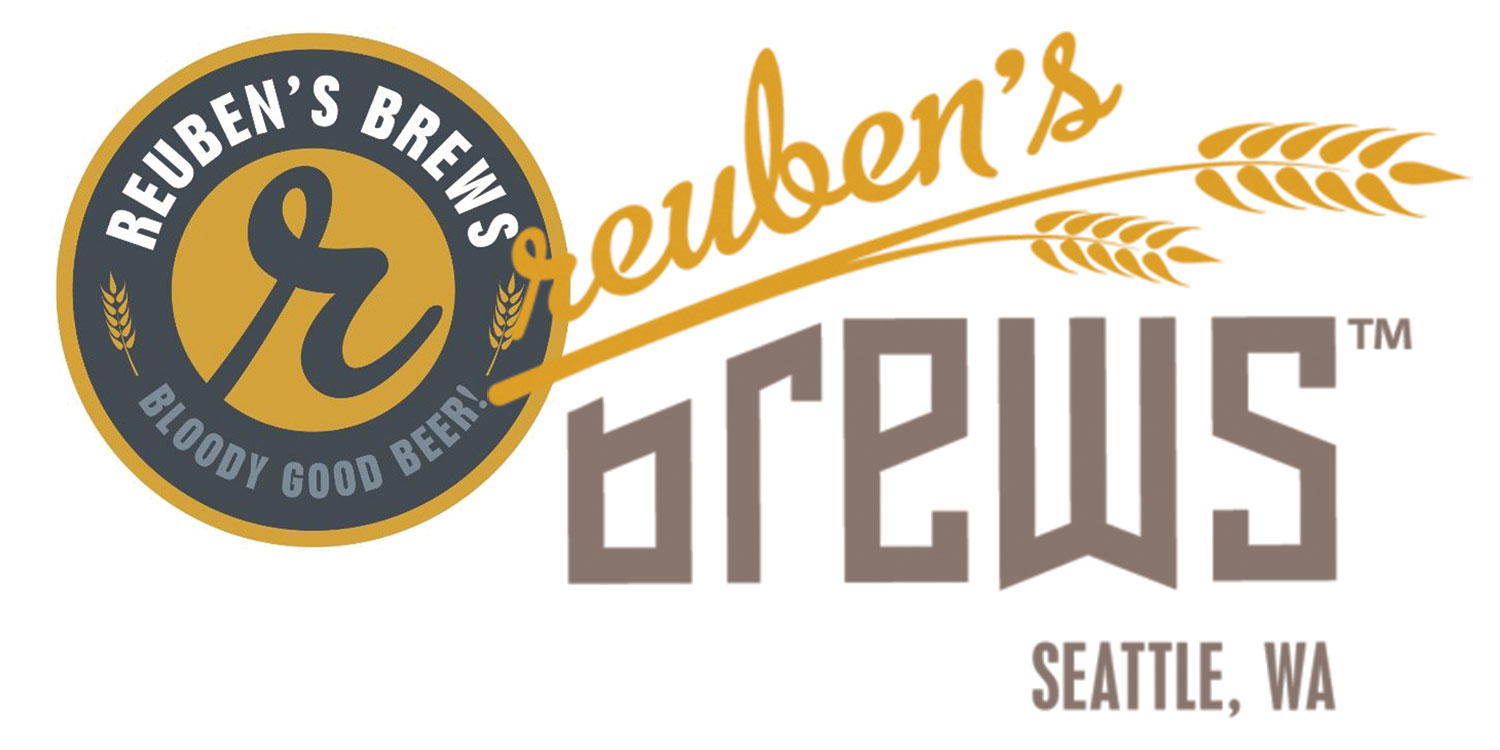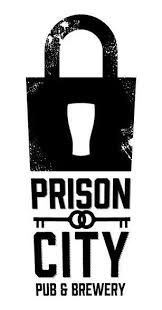
Back in July 2016, I emailed Michael Tonsmeire, whom I knew casually at the time, to see if I could get together with him and get his advice on writing a book. I was thinking very seriously about taking the academic blog posts on brewing hoppy beers to the next level with a book following a similar format. This idea was furthered by discussions I was having at the time with the Brewers Publications who were considering publishing the book (they ultimately turned it down).
As the author of American Sour Beers, I valued Mike’s opinion and was anxious to talk to him before committing to anything. Our book discussions went great but quickly pivoted. After just a few beers dusted off from Mike’s cellar, we were both somehow on board to open up a small brewery. Our initial plan was to purchase wort from local breweries for aging/souring in barrels stored in a cheap warehouse space outside Washington, DC. Now, that was the plan, fast forward to the present day where I no longer work my real DC political job and we are about a month away from opening a 10 barrel brewery in a 7,000 square foot facility in Columbia, MD called Sapwood Cellars.
The moral of the story, be careful when asking Michael Tonsmeire for advice because shit can escalate quickly! Ultimately, I decided to give the book a shot and started spending my free time on weekends in coffee shops with stacks of brewing studies looking for anything that may be of interest to brewers. I found that when trying to write at home, I will do absolutely anything else I can think of rather than writing (like clean a litter box, do laundry, or even drink a lager). Despite feeling like I wasn’t making any progress, slowly the pages and citations starting adding up. I’ve currently cited over 200 sources and have read hundreds of studies.
The book writing processes has been rewarding, I’ve traveled the country making new friends by interviewing some of my favorite hop-forward brewers who were all open and transparent about their processes and approach to brewing. I’m excited to have their real-world experiences included in the book to add color and experience to an otherwise science heavy book. Sometimes the science just isn’t practical or doesn’t pan out when scaled up, so their knowledge, based on batches of experimentation, is incredibly helpful. So, if you are close to any of these breweries, please stop in buy a beer and tell them thanks for me!
I’ve also been lucky enough to interview people in the hop industry, go back-and-forth with many of the authors of the studies asking follow-up questions and to make sure I was understanding their work correctly. I’ve brewed multiple experiments to test some of the research, sent samples to different labs around the United States and even sent samples to a wine lab in France.
Although the book was given an early no from the Brewer’s Publications, I didn’t really see that as a roadblock after seeking the advice of others and determining that self-publishing would be the way to go. The downsides are obvious, I would have to pay out of pocket for all the expenses related to the book. I’d have to take the lead on things I know nothing about like editing, book formatting, and printing. But, on the plus side, I can now be in charge of all of the content and chase research that I find fascinating and exciting. Self-publishing also allows me to work and publish on my own time frame and potentially have easier access to updates if I want to try and keep up with the science! And to be honest, the potential for receiving a greater percentage of book sales from self-publishing is nice, which will be a nice supplement to my blog advertisement revenue over the years of $0.00.
As part of the self-publishing experience I’m navigating, I’m extremely excited that Bryan Roth of Good Beer Hunting and his own personal popular blog called This is Why I’m Drunk has agreed to be the editor for the book. In my opinion, Bryan is one of the hardest working and most talented writers (and podcasters) in the industry today. His talent for diving deep into issues and turning data into captivating stories is something I admire. I’m pumped to have somebody who understands beer and has technical writing skills needed to help make sense of my writing! Apparently, there are differences between words like there and their and it and it’s, but whatever, I’ll leave that to the professionals.
Bryan and I are about midway through the editing phase. For the most part, I’ve wrapped up all the research and writing, but still have a few ideas I’d like to try and get on paper. I’m still sharing portions of the text with individuals who lent their voice to ensure accuracy and make sure what’s shared is within their comfort zone. I have a few ideas for a book cover, but I’m looking for help with design if anybody has experience or recommendations! In that same area, if anybody has experience with general book formatting, please reach out if your willing!
Ultimately, I’d like to have my end of things wrapped up in August, which should mean in September I’ll be able to start selling pre-sales. With a brewery opening around the corner, I’m doing my best to get the book finished before I’m too busy to give it the time it deserves!
I’m happy how things are coming together, it’s definitely not going to be a book for every brewer as some people are normal and just don’t care when polyphenol pickup peaks during dry hopping. But, I’m hoping by sticking to topics and research that truly excited me, it will do the same for others. It’s not intended to be a book telling anyone the best way to brew or the only way to brew hoppy beers. But, diving deep into the literature can help us understand some of our results, inspire new ideas, and to ultimately appreciate the impressively complex nature of brewing hoppy beers!
Stay tuned with me on social media if you want to keep tabs on my progress! Below is a draft of where I’m at now for what to expect in the book (subject to many more changes, deletions, and additions). I hope you like studies!
Draft Table of Contents
Foreword
Introduction
Chapter 1: Introduction to Hop Compounds
History of Hop Oil Research
Hop Bittering Acids
Hop Aroma Compounds
Hop Pellet Blends and Oil Testing
Whole Hop Cones
Hop Oil Testing
Hop Extracts
Chapter 2: Benefits and Drawbacks of Hot-Side-Hopping
Kettle Aroma
Hop Timing and Kettle Aroma
Late Hopping
Oxygen Fraction of Hops
Oxygenated Compounds and Extraction Efficiency
Volatilization of Hop Compounds
Test of Hop Timing – Bittering Addition vs. Whirlpool vs. Dry Hop Additions
Whirlpool Temperature
Whirlpool Durations
DMS, Hops, and Whirlpool Durations
Whirlpool Oxidation and Green Onion Thiol
Chapter 3: Aged Hops
Aged Hops and Increase in Kettle-Hop Flavor
Dry Hopping with Aged Noble Hops
Aged Hops and Cheesy Flavor
Resin Quality with Aged Hops
Brewing Fruit Forward Beers with Aged Hops
How Long to Age Hops
Bitterness Quality
Hop Polyphenols and Aging
Chapter 4: Mouthfeel, Water, and Dextrins
Sulfate-to-Chloride Ratio
Mouthfeel Softness
Dextrins
Limit Dextrinase
Experimental Beer
Chapter 5: Flavor Perceptions
Grist Role in Flavor
Yeast Pitch Rate
Chapter 6: Esters and Fusel Alcohols
Temperature
Trub
Yeast Nutrients
Oxygen
Beer pH
Beer Aging
Chapter 7: Dry Hopping
Introduction of Oxygen When Dry Hopping
Dry Hop Contact Time
Dry Hopping and Polyphenols
What Happens to Pellets During Dry Hopping
Soft vs. Hard Pellets
Method to Dry Hop Loose in Primary and Kegs
Dry Hop Amounts
Total Oil
Dry Hopping and Head Retention
Hop Variety and Foam Retention
Malts and Head Retention
Chapter 8: Dry Hopping and Bitterness
What Are Humulinones
Humulinone Concentration in Hops
Importance of High-Performance Liquid Chromatography (HPLC) Testing Bitterness
Determining Humulinone Content in Hops
Dry Hopping and pH
Hop Aroma and Perceived Bitterness
Dry Hop Bitterness Experiment
Chapter 9: Dry Hopping and Enzymatic Activity
Diacetyl and Dry Hopping
Chapter 10: Biotransformation
Glycosides
Ways to Achieve Beta-Glucosidase Activity
Conditions Favoring Beta-Glucosidase Activity
Difference Between Exo-Beta-Glucanase and Beta-Glucosidase Activity
Biotransformation of Terpenoid Alcohols
Chapter 10: Thiols
What are Thiols
4MMP in Hops
Thiol Potency Indicator
Thiols, Beer Aging, and Bottle Conditioning
Hop Thiol Potential
Lessons from Winemakers
My Experiments with Wine Yeast in Hoppy Beer
Cooper and Thiols
Malt-Derived Thiols
Thiol Flavor Enhancing Role (Synergy)
Chapter 11 – Lupulin Powder
Brewery Experiences with LupuLN2
Lupulin Powder Usage
Polyphenols and Lupulin Powder
Chapter 12: What’s Causing the Haze
Fermentation Dry Hopping
Haze and pH
ABV Level and Haze
Malted vs. Unmalted Grains
Whirlpool Hops and Polyphenols
Hop Variety and Polyphenol Content
Malting Effect on Haze Potential
Experiment on Haze and Malted Grains
Fining Agents
Chapter 13: Tips from Commercial Breweries
Other Half Brewing
Prison City Pub and Brewery
Reuben’s Brews
Breakside Brewery
Bissell Brothers
Great Notion
Acknowledgments
About the Author







-610x915.jpg)
Wow, after reading the table on contents Im sold, so many interesting topics that I have been wondering about and have had trouble finding credible sources on.
Keep up the good work!
JR
Very much looking forward to this Scott…count me in for a pre-order when live!
Sign me up! You guys should do a kickstarter or something similar. Publishing costs could be covered by pre-orders. I’d pay for it in advance.
I don’t read many brewing books any longer, but I’ll definitely be picking this up!
Congrats Scott, can’t wait for this book to finally be published!! I learned a lot through your blog posts over the years. Great accomplishment..
can’t wait to visit Sapwood cellars the summer too
I’m going to buy two just because I’ll probably need a new one after over use
Can’t wait for it ! Keep us posted !
Great job !
Bests !
This sounds fantastic!
So many interesting topics! I can’t wait
I’m in!
Looks awesome! Can’t believe BP refused this!
Extremely excited about this book! And sapwood cellars. I’m willing to take a pass at the book cover if your interested. Just reach out.
Wow, this is by far the homebrew book I’ve been most excited about ever. I consider myself a science person and considering all the changes in the last years a book like this is definitely something that was needed. I can’t believe Brewers Publications turned it down. Best of luck with the final steps of the process. I’ll definitely cop it on preorder.
Good timing
I’ve been researching dry hopping techniques and equipment
I hope the book will detail actual experiments and results for the “Homebrewer”
WANT
Can’t wait to get a copy. Love your website and look forward to reading it.
Covers what one would expect at an annual ASBC meeting. I’m in for a copy.
Thanks,
Scott
Index looks great, really looking forward to reading this!
Sign me up, can’t wait!!
same for me i will pre order when goes live
Looks right up my alley!
Oh my God, I can’t wait for this one… Definitely a book well-needed and should be popular amongst many. Having this as a tool and source of knowledge at hand is gonna be great!
One question though, under chapter 7, you write as follows:
– Dry Hopping and Head Retention
– Hop Variety and Foam Retention
– Malts and Head Retention
Do you distinguish between “head retention” and “foam retention”? I would say that it’s the same thing, but I’m also Danish, so maybe my distinctions in the English language are just too poor?
I consider them the same thing!
This…this is the book that I need in my life. Have a couple solid IPA recipes that have won some awards that I want to really hone in on, but having an “all in one” resource like this would be friggin EPIC!
Will continue to keep my eyes out for progress so I can snap it up in a pre-order once it’s ready 🙂
Hey Scott, any new timeline updates on the book? Anxiously waiting to give you money….
Take my money! Can’t wait!
Any discussion of First Wort Hopping?
Hello,
PFV Network United States is a supplier of conventional and USDA certified organic bulk juice concentrates. Our concentrated juices are packed in a range of cost saving bulk pack sizes starting from 5 gallon pails (buckets) and 20 lb. aseptic bag in box, up to 55 US gal. aseptic bag in drums and in larger totes (IBC containers, bins). We are able to handle with your conventional and organic fruit and vegetable juice concentrate orders, from pail size volumes up to pallet loads and truck loads (container loads). 100% natural additive-free bulk concentrates with Kosher, Non-GMO, clean label, baby food quality, allergen-free, dairy-free, pesticide-free options are offered in a wide range of specifications in order to meet with your specific requirements for various industrial applications; From brewing (beer production on industrial scale or craft brewing) to beverages, from baby food to sauces, from fruit leathers to bakery, wine, distillery, pet food, soft drinks, kombucha tea, ice creams, technical compounds, fruit and vegetable juices and nectars, flavored drinks and for several other industrial products, where supplying the raw material and ingredients in bulk packaging is crucial for cost-effective solutions. We are cooperating with the largest U.S. based juice concentrate suppliers, packers, factories, importers, distributors and warehouses at strategic locations throughout the East Coast and West Coast United States. Depending on availability, we provide free juice concentrate samples and we assist you through your product development process. We proudly support startup companies with providing best prices and flexible payment terms.
Website: https://nfcjuiceconcentratepuree.org/
Thank you!
Thanks, all this web is very interesting. So I imagine same with your book. I wish to know how to get it, maybe soon? Greetings from Barcelona.
Q1 or Q2 of 2019?
I’m shooting for Q1!
Can’t wait to read your book! Keep up your great work.
Scott – this book has the potential to become a seminal tome. PLEASE write this book. And PLEASE ship to NZ or publish an e-book version too. Good luck
Scott, this book will be an instant best seller. It’s Table of Contents promise to be an encyclopedic treatise on the Black Arts involved in brewing. Your previous recipes for Pliny the Elder and Pliny the Younger were ground breaking at the time, and now it appears your going create a paradigm shift in brewing skills for the homebrewers to hone their abilities. Congrats, can’t wait for the book.
Dan Arnswald